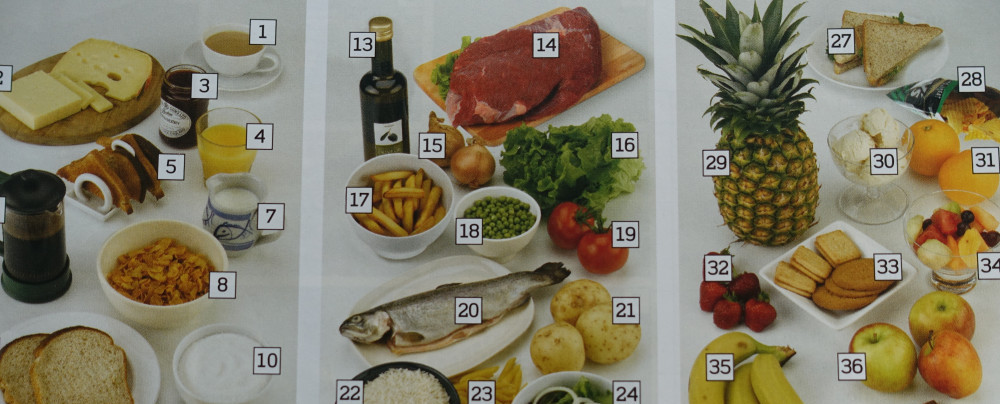Feed their stomachs then feed their brains.
As an ESL teacher, I am always looking for different ideas and ways to get my teaching ideas out there.
One of the joys of being a long-time ESL teacher is you are never stuck for an idea to use in the classroom. After 15 years I can walk into just about any classroom and have a fallback lesson plan.
However, for me, it is not something I would want to do continually. To have an informative, fun, and interesting lesson you need prior preparation.
Prior Preparation Prevents Poor Performance.
You can only follow your student and teacher class books for so long until you need to mix things up a bit to keep your students and yourself motivated and your lessons fun and focused.
In Vietnam, you will quite often see “Mum” walking down the street with a bowl of rice or other breakfast for her child.
A slightly different attitude from where I was brought up. My mealtime option was, to eat it now or have it again for lunch.
So my amusement level was kicked into overdrive when I saw this, and I wondered if I could do something similar with my students?
No, not to chase my class down the road, but to get them to cook,( under my directions) and then sit around talk and eat.
It’s Time to Pre-Plan our Pre-Planning.
Pre-planning has not changed much over the years and it still comes down to these concepts for the classroom.
Lesson plans use a variety of tactics to engage students, measure progress, and encourage learning and understanding.
At the same time as keeping the students at the top of the teachers mind. It’s a time when teachers see all the teaching resources and consider how they’ll fit together to create a successful learning experience.
Teachers who plan lessons ahead of time arrive in the classroom each day fully prepared to explain new concepts and conduct important conversations, rather than winging it.
Without a lesson plan, students may lose concentration rapidly, and teachers may find themselves trying to figure out what to do next.
Getting the culinary vocabulary in order.
Decide on what you are going to teach, and what is your focus of the day. Don’t feel bound to teach just one thing, you may want to teach vocabulary first, followed up by the color, size, taste, smell, and feel/texture of their food. Students can share their work with the rest of the class.
When teaching ESL the points we want to cover are listening, speaking, reading, and writing, in that order. I try to cover at least 2 of these areas in every class. Listening is the first skill and you can find out more here at ” Listening Skills“
Grammar.
And as unpopular as it is, I will try to cover at least one grammatical point along the way. I will do this by pre-reading some grammatical points.
For Example; Countable and Uncountable nouns and can we make uncountable nouns countable by adding a countable word before the “noun”.
- A bottle of water. There are three bottles of water on the table.
- A cup of tea. I want three cups of tea, please.
- A bowl of rice. I often have a bowl of rice for dinner.
- A bar of chocolate. Can I have a bar of chocolate,?
- A piece of pizza. Here is a piece of pizza for you.
- A jar of jam. How many jars of jam should I make?
There are many things you can cover when teaching “cooking in the Classroom” here is a great website that I have used on and off for years. ESL Kidstuff. They cater more to the younger student.
Or you may wish to have a look at a previous post that shows you my top 10 websites for anything from Vocabulary to videos, songs, and Language Learning. “My Top Ten Websites for ESL Teachers“.
Keep it Age Relevant.
I wouldn’t do a class 100% focused on cooking for kindergarten. However, I have done it for younger students with simpler recipes and no sharp utensils or plates and bowls that can be broken.
If there is a chance for students to drop bowls, plates, etc, it will happen. Make sure you have replaced your “fine china” with plastic and you have a mop and rags on hand.
Keep it culturally appropriate and check for Allergies.
Some of the students in your classroom will have allergies or will be unable to eat certain foods due to religious or cultural restrictions. So consult with their parents and the school before making any final decisions about what you want to cook in class.
You may have to alter your plans, but it is well worth the effort if it means that everyone can fully participate and that there is no risk of anyone becoming ill or unable to consume the food.
Younger Students.
If you have decided to have fun with your younger students, well done. Most teachers will put this in the too-hard basket and revert to the book. However, it is not impossible or complicated to have a successful “cooking class”.
A little preparation will go a long way. Think about what you want to teach (Easy Vocabulary) and in a way that is the least messy. A simple “recipe ” to use for children is “fairy bread”

Fairy Bread.
You can have everything pre-prepared in your classroom or Kitchen. ( More on this soon). This is so simple that all you need is the bread, hundreds and thousands, and margarine or soft butter.
You can butter the bread, sprinkle on the hundreds and thousands and then “iconically” cut it into triangles for that perfect shape.
Teaching Goals for the younger student.
My major goal for the younger student is to develop and nurture the joy of wanting to learn. In this case, it happens to be ESL or English as a Second Language.
The secondary, although some say it’s the primary goal, is to increase the vocabulary and pronunciation skills of the young learner. But if you have instilled the joy of learning, vocabulary and pronunciation will be a breeze to teach.
Getting your student to talk and communicate in English is the ultimate outcome for the ESL Teacher.
Songs.
There are many enjoyable songs about food and cooking that can be learned and sung. Make sure you have at least one of these for your class.
Songs make learning vocabulary for younger students much easier, especially if there is an amusing video to go along with it or funny gestures to follow in the classroom.
Here are some more…” Tips for Using Songs in The Classroom“
Classroom or kitchen.
I count my blessings, as one of my schools is within a house. So I have ample room to bring out 15 to 20 chairs for my students to sit, watch and join in with the cooking experience.

And directly behind me, there is seating for up to 25 people with, the all-important, air conditioning.
So I am lucky to be able to provide a flexible environment where the students can learn. However, for those who do not have the same flexibility as me, you can still do a lot in the classroom.
My lesson Plan for Students in the Kitchen is as follows.
1. Vocabulary.
- Food Nouns.
- Food Utensil Nouns.
- Food preparation verbs.
2. Food preparation Instructions.
- Introduce the recipe and make sure the students understand the different terminology used in cooking.
- Break the students up into groups and get them to perform the different activities needed to make a meal.
- Don’t forget to get all the students to perform the more onerous tasks like washing the dishes and cleaning up.
3. Cook, Eat and Talk.
Discuss with the students what they found the hardest things to do. Turn the conversation into a general English-speaking free for all. Have a backup list of prepared questions that you can introduce to keep the conversation flowing.
Recipes; Use a recipe that is not too difficult. Or with words and phrases that may overwhelm the students. But I have certainly gone beyond “eggs on toast”. Introducing foreign food is a great way to stimulate conversation.
Basic Questions.
- Do you like this meal?
- Is there any part of the recipe you would change?
- What are your favorite dishes?
- Can you cook?
- Who does most of the cooking in your house?
Add your own questions.
Think outside the square (table). Food challenges in 2022.
Although not strictly within the category of cooking in the classroom, it does introduce another area for talking about food that could be used to start debates about the ethics of binge eating while there are people dying from starvation.
Like all lessons and lesson planning, we are only limited by our own imagination.
Conclusion.
Laugh and learn.
When you’re in the middle of a classroom with “hundreds and thousands” ( The candy, not the students) rolling around the floor and your dog is greedily eating their 5th piece of bread, Relax.
Even if everything appears to be a train wreck, keep laughing and try to stay calm and enjoy yourself.
And you will probably be amazed at how much your students learned through that lesson.
They will remember it for a long time because they had so much fun even if it went off the rails a bit.
A great lesson is a lesson with a lot of laughter and learning!
Who Am I?
My name is Stephen and I have been teaching ESL in Vietnam for over 15 years. It has given me equal measures of joy and frustrations, sometimes at the same time.
One thing it has never given me is boredom. If you are looking for a satisfying career in helping others attain their dreams, reach out to me and see if I can help you find a job in Vietnam or Thailand.
You can check me out on my YouTube channel below.
Any or all links on this site may be affiliate links, and if you purchase something through those links I will make a small commission on them.
There will be no extra cost to you and at times due to my affiliation, you could actually save money.
You can read our full affiliate disclosure here.



